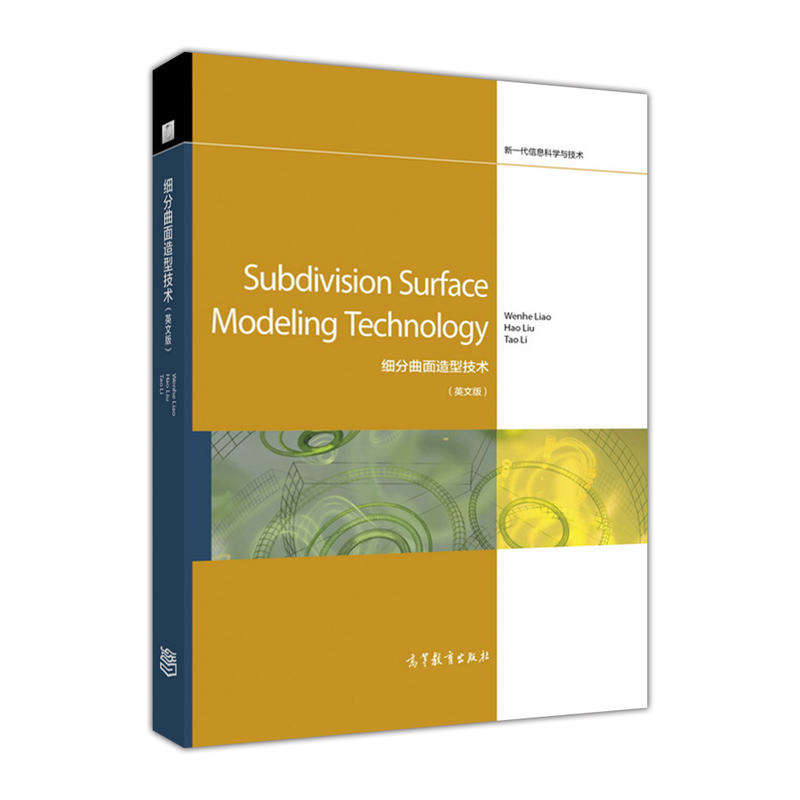- ISBN:9787040475142
- 装帧:一般胶版纸
- 册数:暂无
- 重量:暂无
- 开本:16开
- 页数:324
- 出版时间:2018-02-01
- 条形码:9787040475142 ; 978-7-04-047514-2
本书特色
Subdivision Surface Modeling Technology(英文版)(细分曲面造型技术)
内容简介
细分曲面造型技术是当前计算机辅助设计和制造业数字化领域的一项重要的曲面造型技术,在逆向工程中有着重要的应用,在高端制造业、三维(3D)打印中的复杂形体设计和制造起到积极和不可或缺的作用。
目录
作者简介
Wenhe Liao is Professor in Nanjing University of Aeronautics and Astronautics, also the Vice President of Nanjing University of Science and Technology. He is the director of the Research Centre for Digital Design and Manufacturing Technology, Member of Geometric Design & Computing Committee, China Society for In-dustrial and Applied Mathematics. His research fields include air three-dimensional (3D) digi-tal design, virtual assembly, and digital medical equipment technology and micro-satellite design. He has published 2 books and dozens of papers on CAD/CAM. Hao Liu is Associate Professor in Nanjing Uni-versity of Aeronautics and Astronautics. He is Member of Geometric Design & Computing Committee, China Society for Industrial and Applied Mathematics. His research fields include surface modeling, CAD/CAM, 3D printing and CT image processing. He has published a text-book and more than ten papers on geometry modeling and CT image processing. Tao Li is Lecturer in Suzhou University of Sci-ence and Technology. His research fields include surface modeling, reverse engineering and digi-tal geometry processing. He has published more than ten papers on geometry modeling and pro-cessing.
-

大模型应用开发极简入门 基于GPT-4和ChatGPT
¥41.9¥59.8 -

这就是ChatGPT
¥41.9¥59.8 -

电脑组装、选购、操作、维护、维修从入门到精通
¥32.2¥48.0 -

数据结构教程(第6版·微课视频·题库版)
¥46.5¥65.0 -

计算机组成原理实验指导与习题解析
¥34.8¥52.0 -

微信小程序开发教程
¥31.4¥49.0 -

机器学习
¥47.4¥108.0 -

C程序设计(第五版)
¥18.6¥49.0 -

深度学习导论
¥24.5¥49.0 -

有限与无限的游戏:一个哲学家眼中的竞技世界
¥36.4¥68.0 -

RFID与智能卡技术实验指导书
¥28.4¥36.0 -

UNITY游戏开发经典实例
¥73.0¥128.0 -

软件开发技术基础 第4版
¥65.7¥79.9 -

软件测试
¥50.0¥68.0 -

AIGC文图学 人类3.0时代的生产力
¥36.0¥48.0 -

AFter Effects 影视后期特效实战教程
¥45.0¥69.8 -

生物特征识别算法研究
¥20.1¥39.0 -

大模型应用开发动手做AIAGENT
¥62.9¥89.8 -

游戏造物主;游戏与制作人的幕后故事
¥63.6¥108.0 -

python语言程序设计(第2版)(含视频教学)
¥50.6¥69.9













